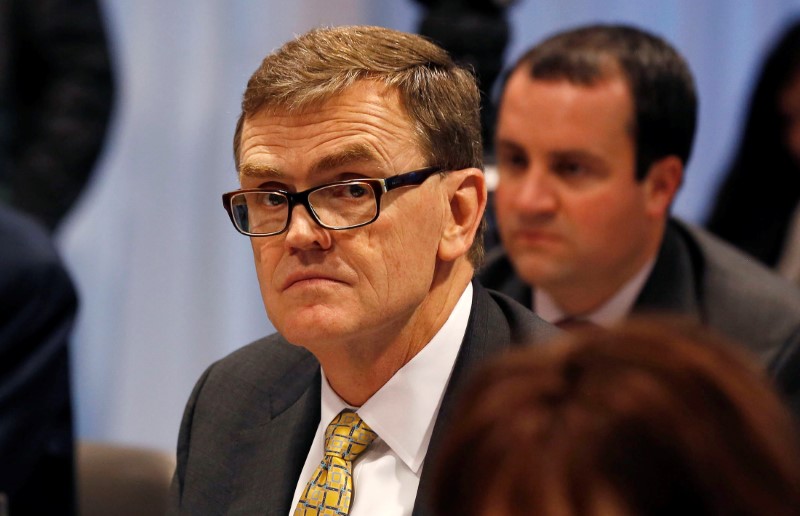By Eric M. Johnson
(Reuters) - Getting more of its major retailer customers to share data on their holiday shipping needs will prevent a repeat of last year's parcel delivery bottleneck, United Parcel Service Inc's (N:UPS) Chief Executive told Reuters.
The world's largest package delivery company delivered a record 762 million packages, exceeding forecasts, during the peak U.S. holiday shopping season which runs from around the Thanksgiving Day holiday in late November through to Christmas in late December.
But around "Cyber Monday", the first Monday after the annual Thursday Thanksgiving holiday in late November, those extra packages also exceeded its ability to handle them, adding about $125 million in fourth-quarter operating costs, UPS CEO David Abney said.
"Our forecasting during peak was extremely accurate," Abney told Reuters after the company reported quarterly results on Thursday. "It was that cyber weekend and cyber week that we have to do a better job of working with our customers."
UPS expected volume to increase 9.0 percent, but it increased 20 percent, around the time of Cyber Monday, he said. "When you are talking about that you are delivering 25-30 million packages a day, that 20 percent had a significant impact."
This is not the first time UPS has experienced problems with balancing costs and resources in its network during peak season shopping, and those problems have persistently stemmed from its burgeoning, unpredictable and low-margin e-commerce business.
A late surge in e-commerce orders and bad weather in 2013 left an estimated two million packages undelivered on Christmas Eve, mostly stranded in Atlanta-based UPS's package network.
Main rival FedEx Corp (N:FDX) experienced problems on a smaller scale.
In 2014, UPS spent $500 million, boosted seasonal hiring and worked with retailers to forecast package volumes that failed to materialize and overspending hurt fourth-quarter earnings. FedEx did not experience problems that year.
Since getting peak season right in 2015, executives have said repeatedly UPS is deepening cooperation with major customers to improve visibility on orders and better manage network bulges.
The company has also invested heavily to handle ecommerce packages, while trying to figure out ways to cut the higher costs associated with delivering packages to residential addresses versus businesses. It has also raised shipping rates and added peak-season surcharges. [nL2N1N026T]
Abney said UPS will expand the number of customers it receives package volume forecasts from.
"The area that we've got to focus on of course for this year is cyber week, and we already announced changes in the surcharges that we think we will help that for 2018," he said. "We're going to continue to discuss other ways we can send that message across."
Earlier Thursday, UPS reported a quarterly net profit that was boosted by growth in deliveries in the U.S. and abroad and benefits from changes to U.S. tax law, though its capital spending and the 2018 earnings outlook overshadowed its results. [nL2N1PR0IO]
